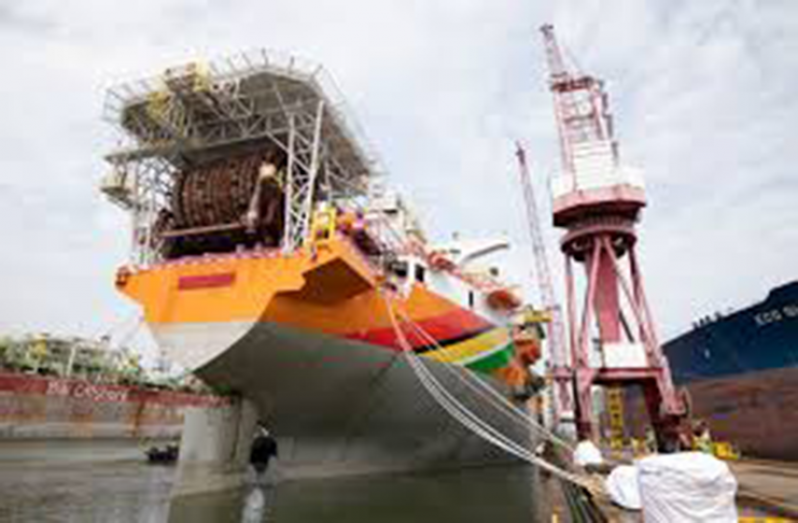…to engage local stakeholders
GUYANA’S oil and gas sector is one step closer to realisation, with oil traders heading to the world’s newest petrostate to engage local stakeholders and bid on the “first oil” cargoes this week.
According to a report from Bloomberg, at least half a dozen traders from Houston, Geneva and London will land in Guyana this weekend to bid on some of the first-oil cargoes produced here.
The Bloomberg report further said Guyana is poised to produce more oil than neighbouring Venezuela, but the country has no experience in trading oil and is looking to learn the basics from its very first buyer. Just last week, Government sent a letter to refiners around the globe inviting them to bid for 3 million barrels of Liza Blend crude, the light-sweet oil it will start exporting next year.
The catch is that the buyer must take the unusual role of handling “all operating and back-office responsibilities” related to exporting the crude, according to a document seen by Bloomberg.
“On top of that, the bids must be offered “face to face” — in the country’s capital of Georgetown — starting Monday. Such a voyage is rare for traders, who do most of their business on instant-message platforms and by phone,” said Bloomberg.
According to the report, the Liza field is scheduled to start production this month and will reach 120,000 barrels a day next year. By 2025, it is expected to ramp up to 750,000 barrels daily. At that rate, Guyana is set to produce as much oil as Venezuela in five years.
“Guyana’s output boom comes at a trying time for global oil markets. The U.S., Brazil and Norway are all growing production even as the Organisation of the Petroleum Exporting Countries and its allies cut their own output in a bid to curb a global supply surplus. Guyana’s Liza blend has similar characteristics to grades produced by Nigeria and Angola and is also seen as an alternative to U.S. oil,” said Bloomberg in its report.
Local online media, Oil Now, had reported that Fitch Ratings, one of the “big three credit rating agencies” in the US, sees oil prices averaging $65 per barrel towards the end of 2019 and into 2020, around the time the South American country of Guyana is expected to begin producing oil.
Fitch Ratings’ Senior Director, Dmitry Marinchenko, told Reuters in an interview that a faltering global economy may start eating into demand for oil as early as this year, pushing prices lower. This is against the backdrop of Brent crude (Guyana’s likely benchmark) currently trading at around $70 per barrel, its highest so far for the year.
According to the report, the rating agency expects global economic growth to slow to 2.8 per cent in 2019-2020 from 3.2 per cent in 2018.
It sees 2019 oil prices averaging around $65 per barrel, falling to $62.50 in 2020 and $57.50 by 2022.
It reported that ExxonMobil found more than 5.5 billion barrels of recoverable oil in Guyana. And as production draws close, the US oil giants, ExxonMobil and its partners are conducting the final testing of systems and equipment onboard the Liza Destiny Floating, Production, Storage and Offloading (FPSO) vessel in preparation for ‘first oil’ still possible in December 2019.
“The risers have been hooked to the Liza Destiny, so we’re now in the commissioning phase which includes testing the equipment – pressure testing – and ensuring that everything is working smoothly,” Public and Government Affairs Adviser, Janelle Persaud, told reporters on Thursday.
Risers are pipes which connects an offshore FPSO or a Drilling Rig to a sub-sea system for production purposes. They connect the flowlines to the surface facility and transport fluids.
ExxonMobil and its partners are meticulous when it comes to safety and the go-ahead for oil production will not be given until they are sure all that are needed are in place. ‘First oil’ will be determined when a formal decision is given for the go-ahead and oil flows through the choke up to the surface which could take a matter of hours.
Meanwhile, Guyana has already started to make preparations for the incoming revenue from the sector. Just last week, Finance Minister, Winston Jordan and the Governor of the Bank of Guyana (BoG), Dr. Gobind Ganga, entered into an operational agreement for the management of the Natural Resource Fund (NRF).
The Memorandum of Understanding (MoU) was handed over to the governor at the Ministry of Finance in accordance with sections 11 and 12 of the NRF Act 2019. “The Bank of Guyana has been mandated by the NRF Act to ensure that the NRF is managed prudently. Other countries that have similar funds managed by their Central Banks include Norway, Chile and Botswana. The inflows to the NRF will be in United States of America dollars which will be deposited in US bank accounts held by the Bank of Guyana,” the finance minister stated.
He continued: “It is important to note that most central banks and SWFs manage reserves by holding them in foreign-denominated currencies outside of their jurisdiction. In preparation for its role as operational manager of the NRF, the Bank of Guyana has begun building additional capacity, supported by the World Bank’s Reserves Advisory and Management Programme (RAMP), with whom an agreement was signed on October 1, 2019.”




.png)









